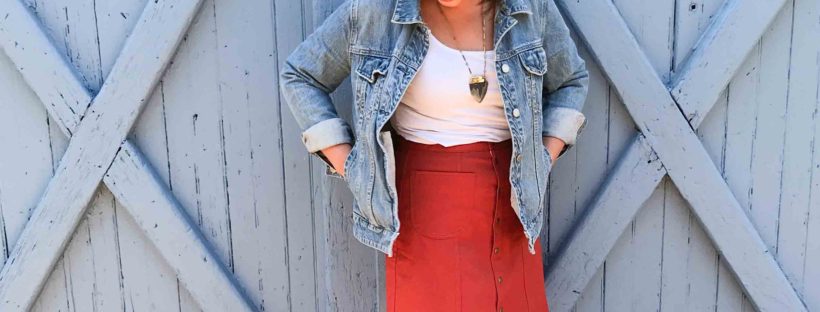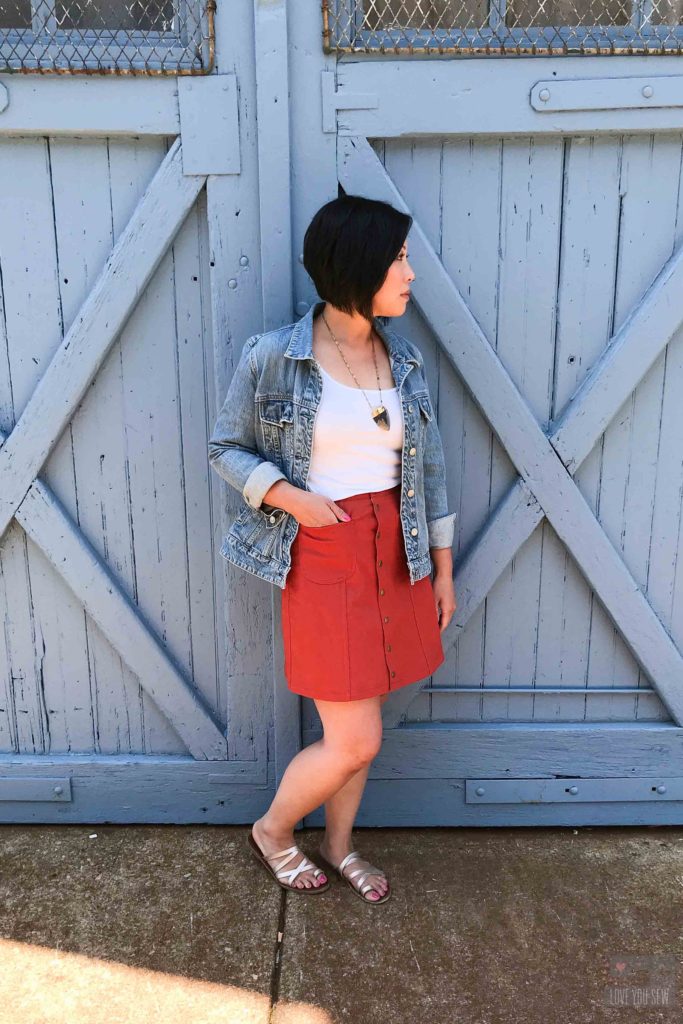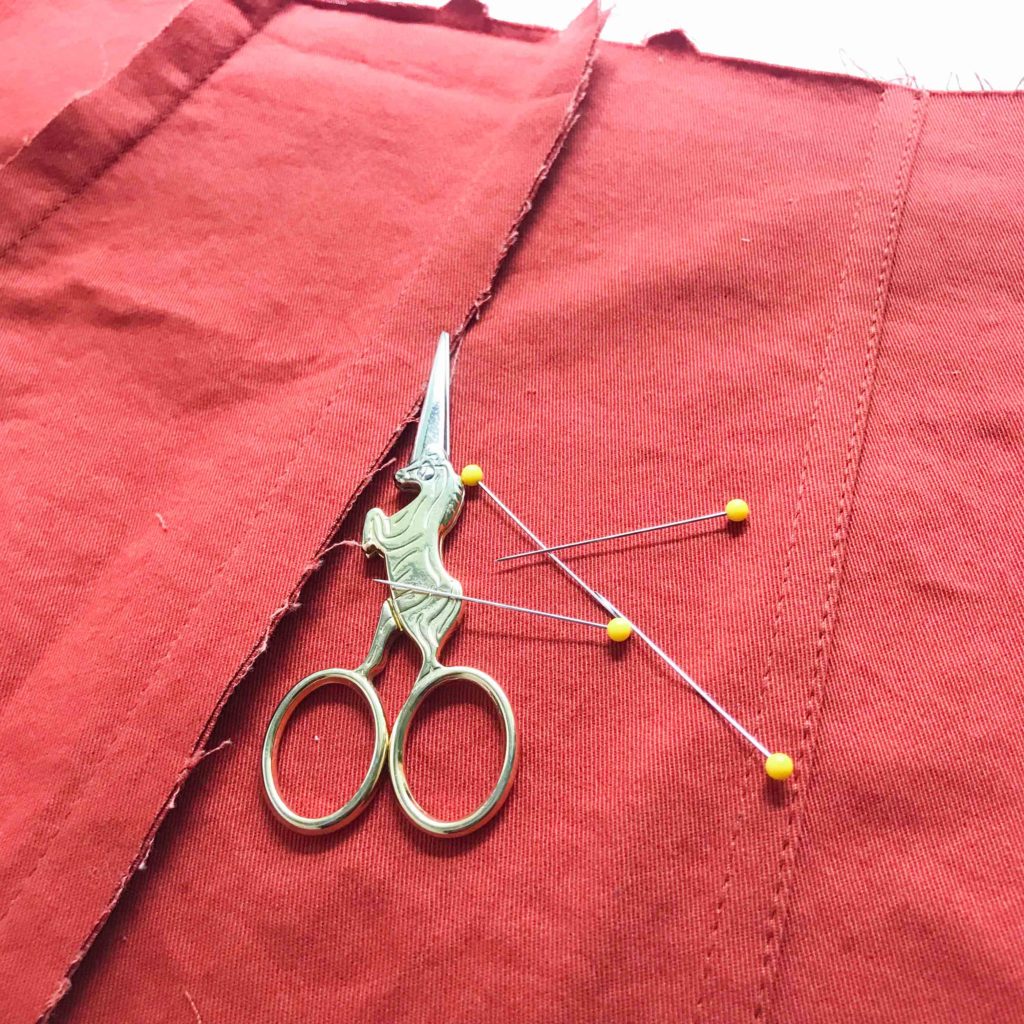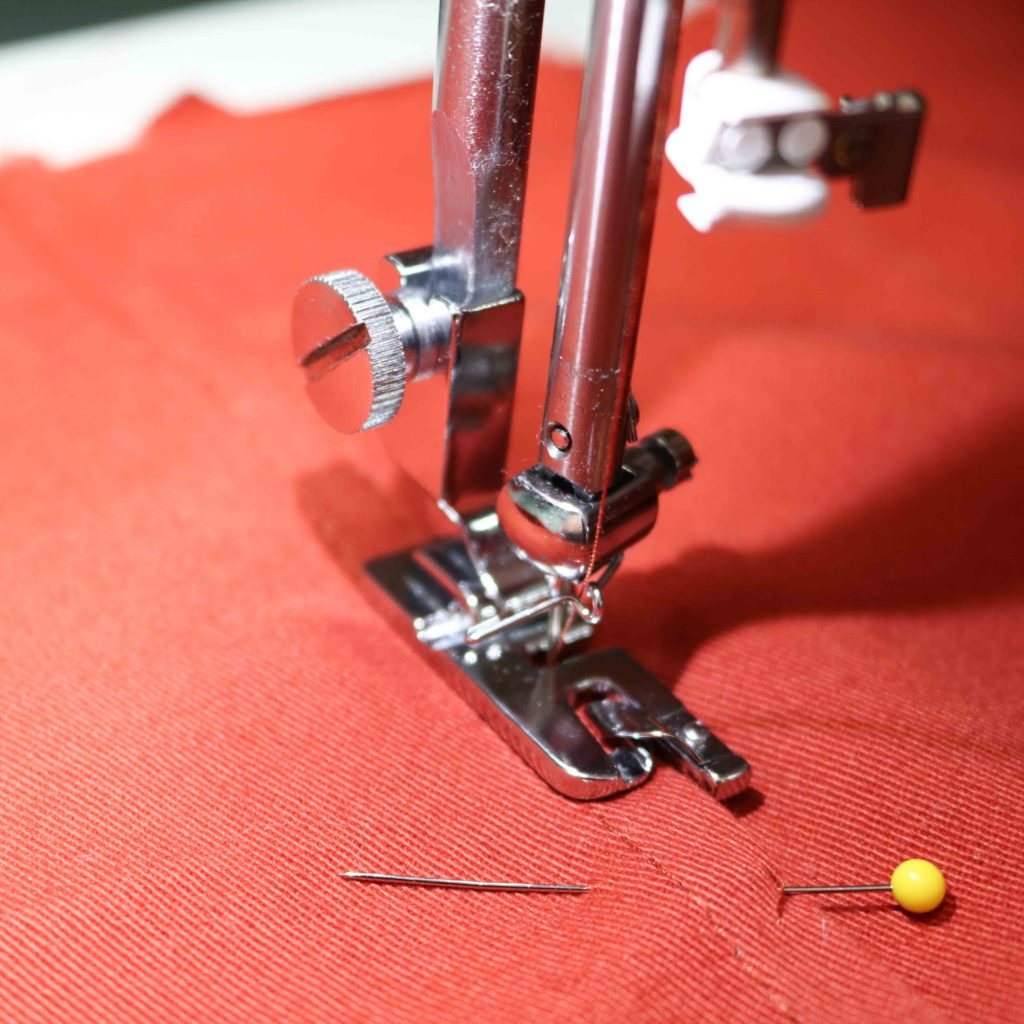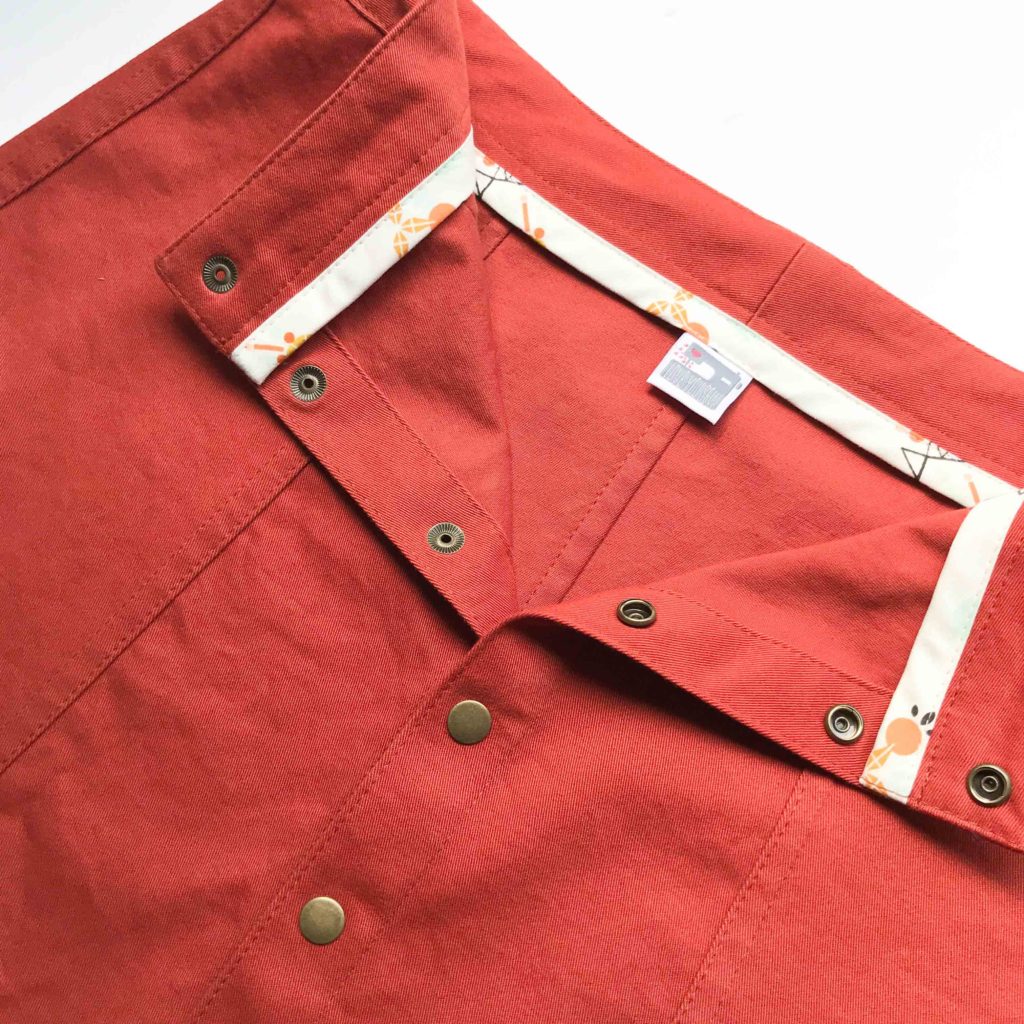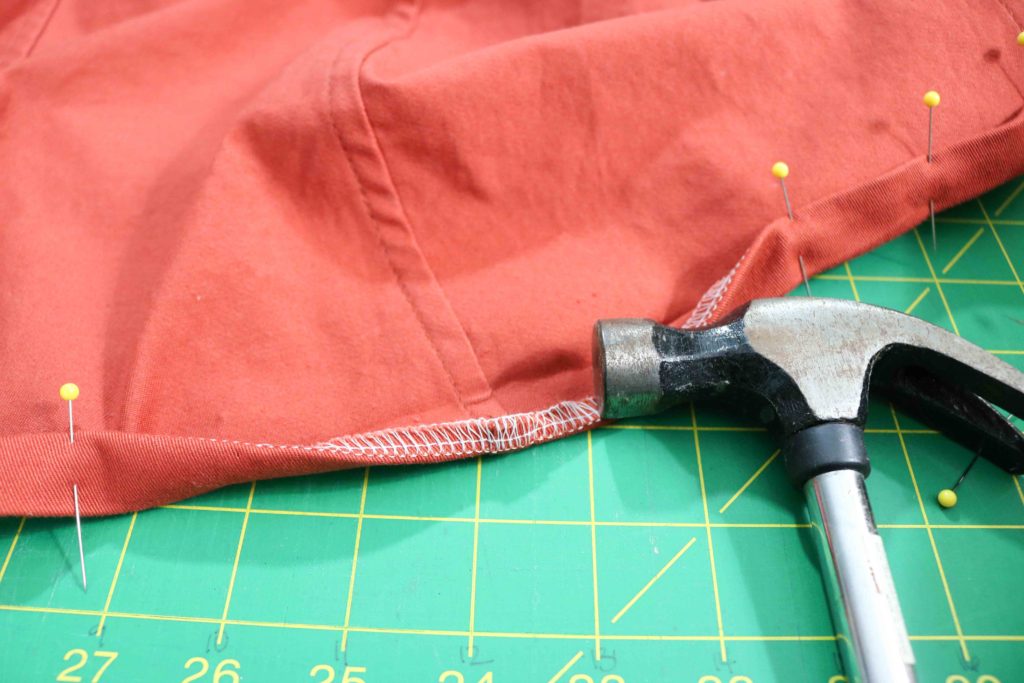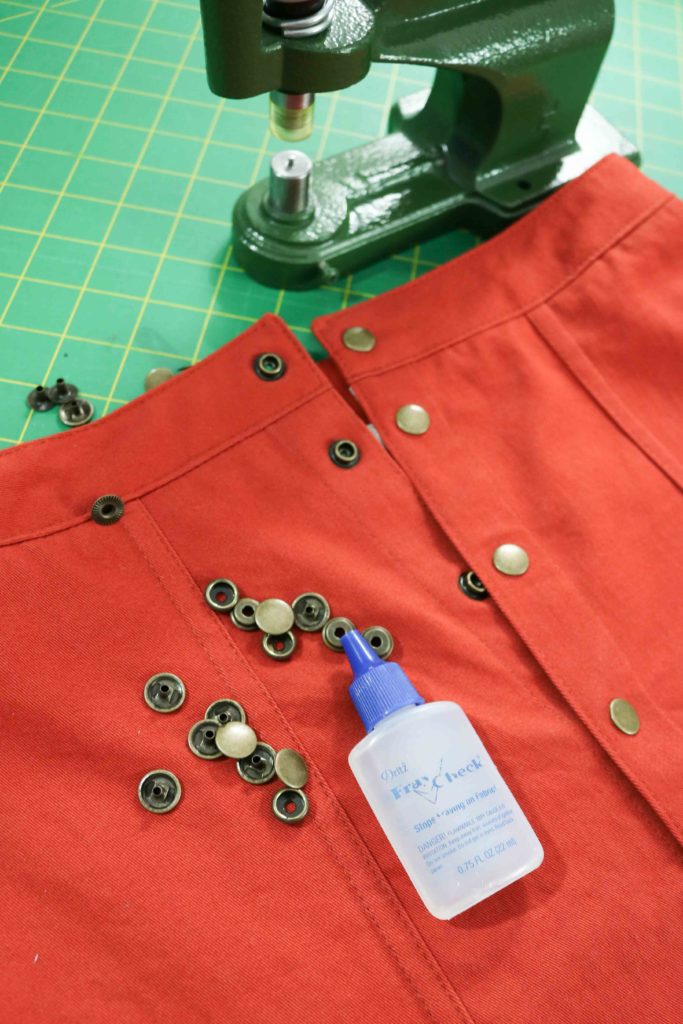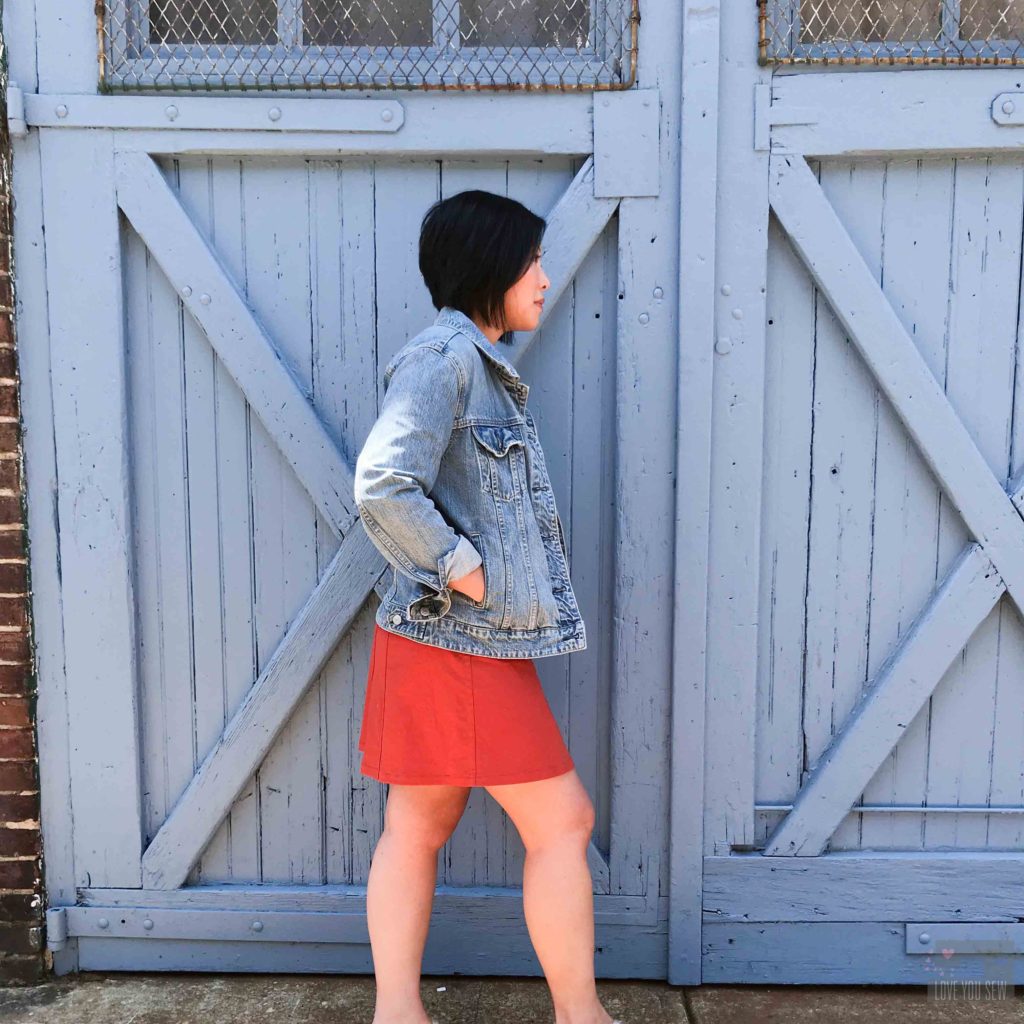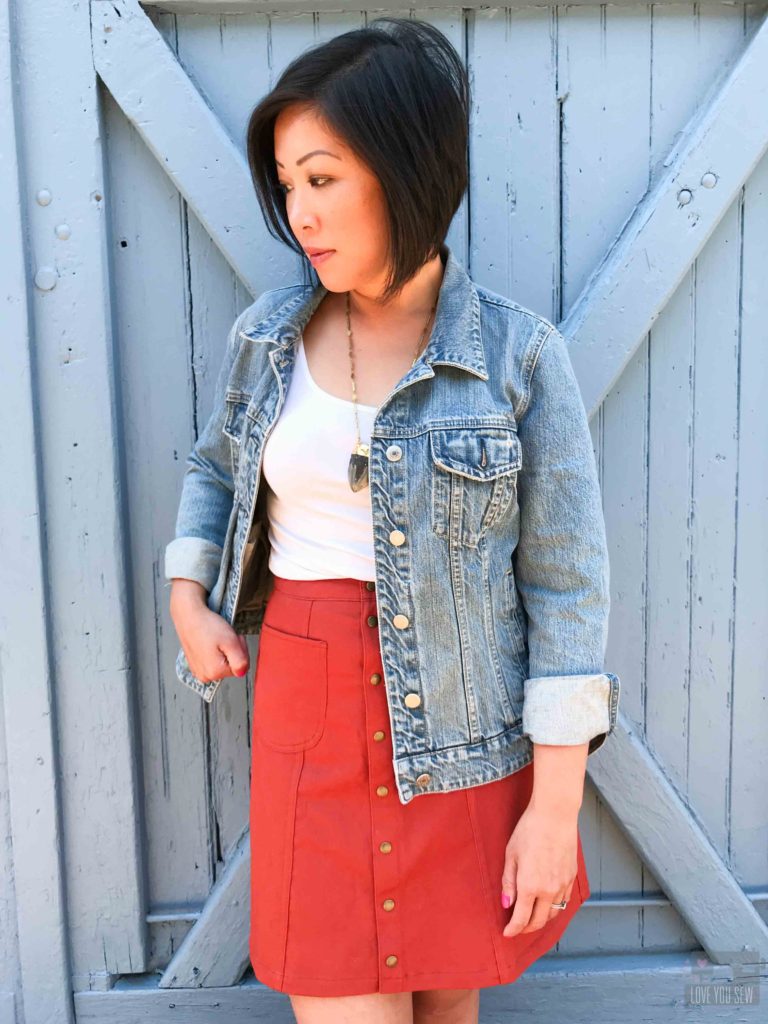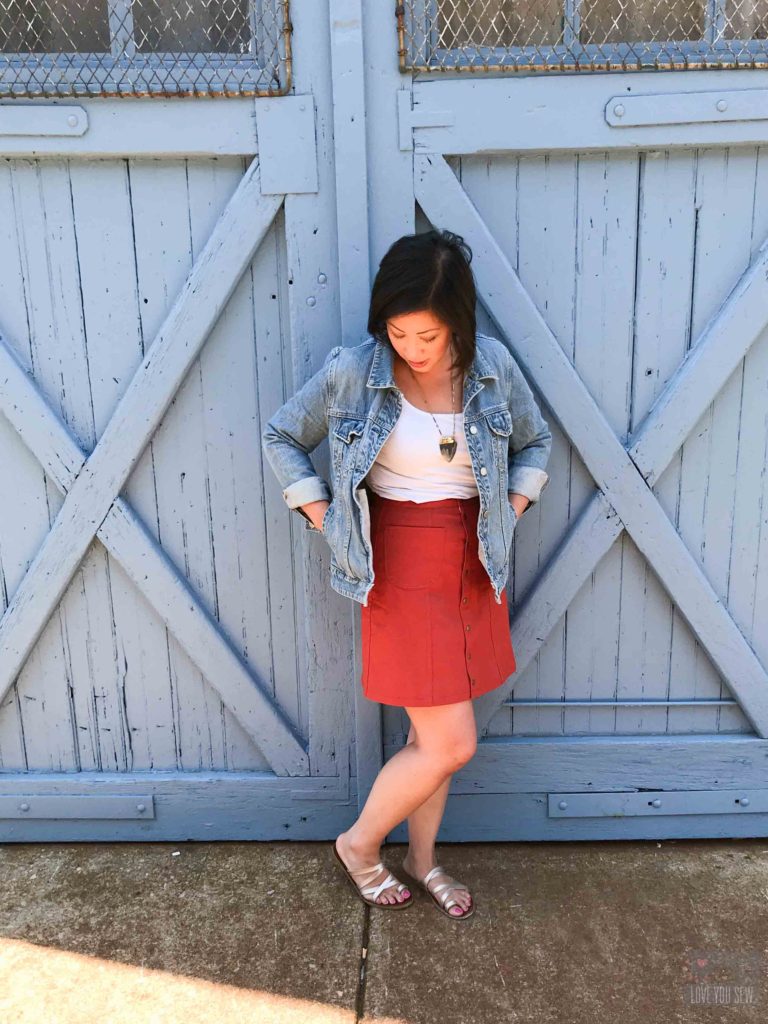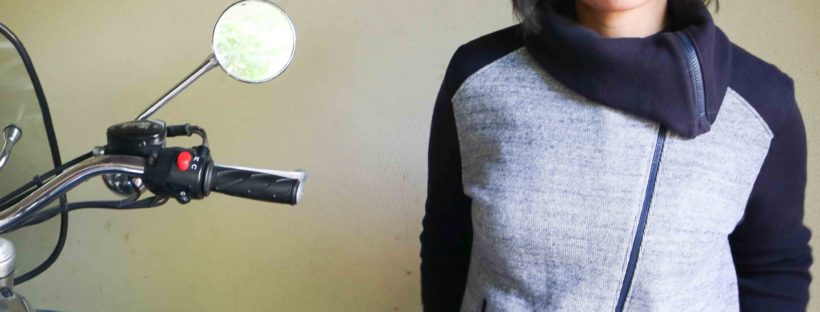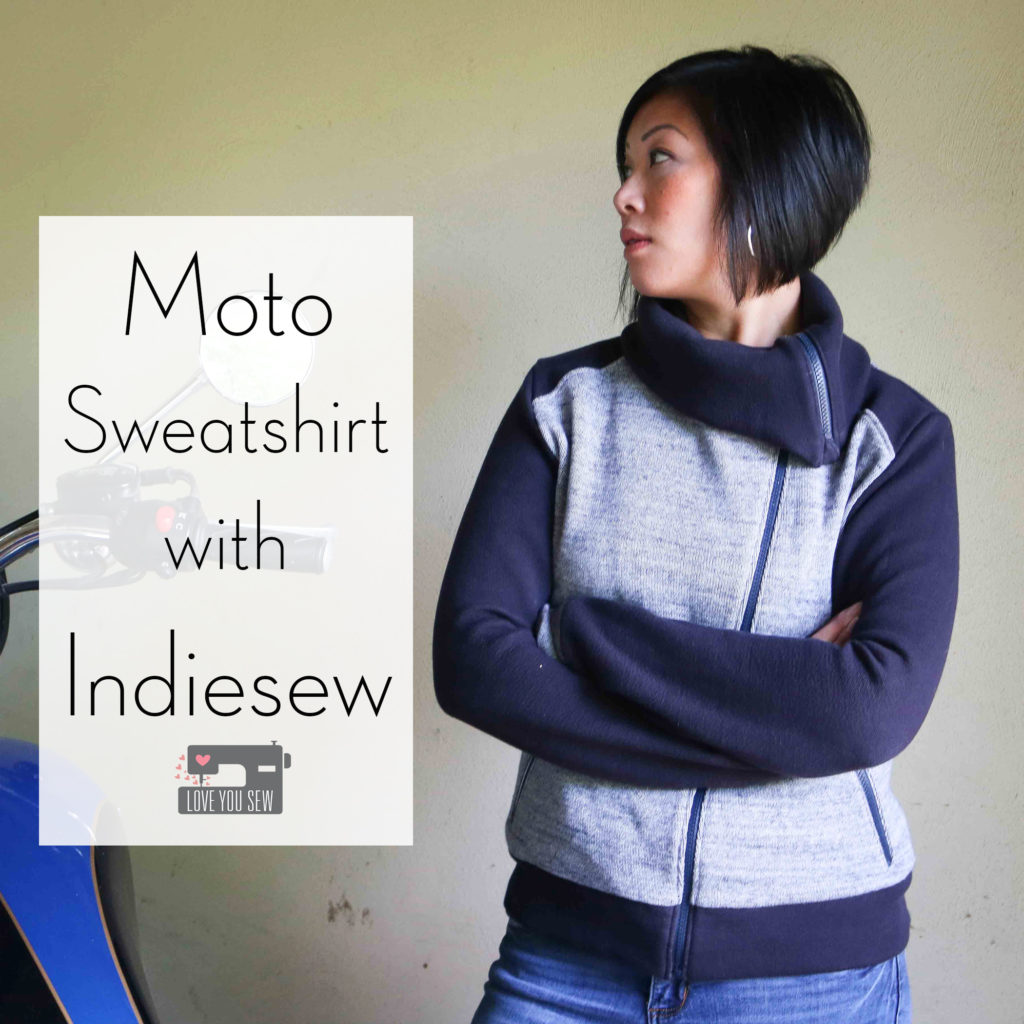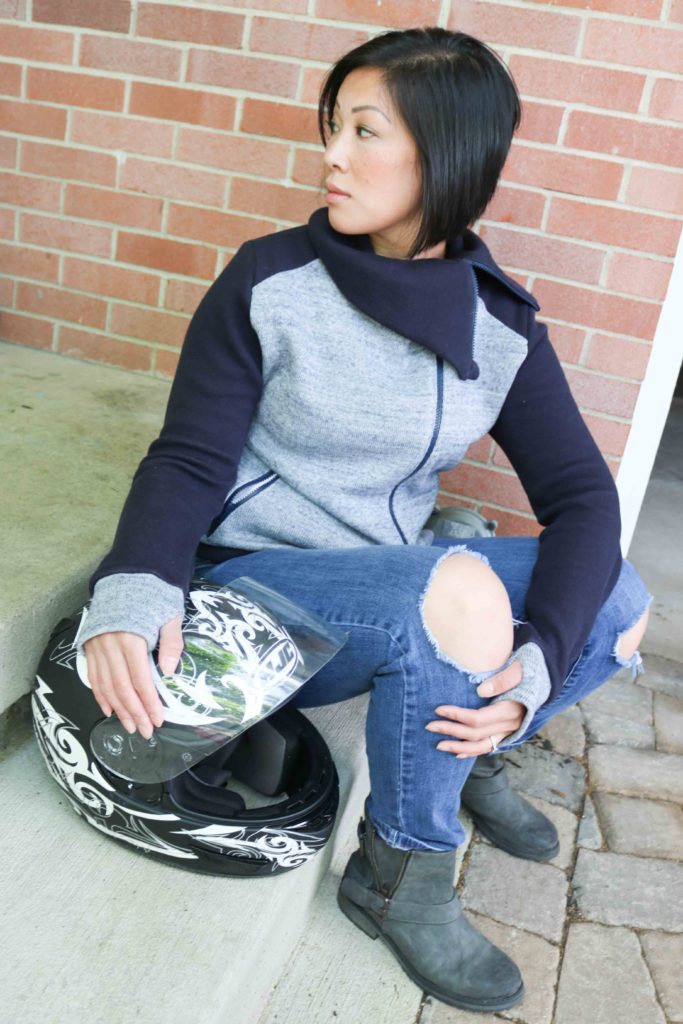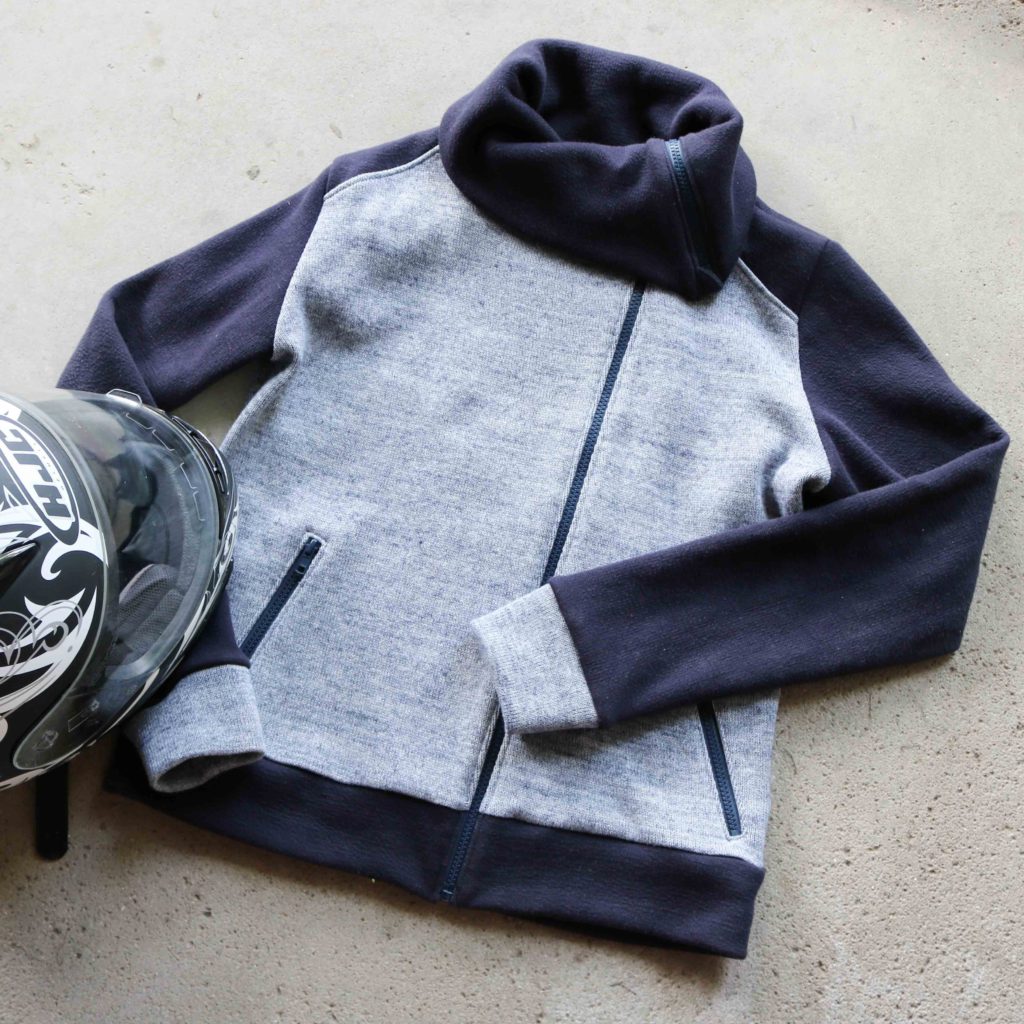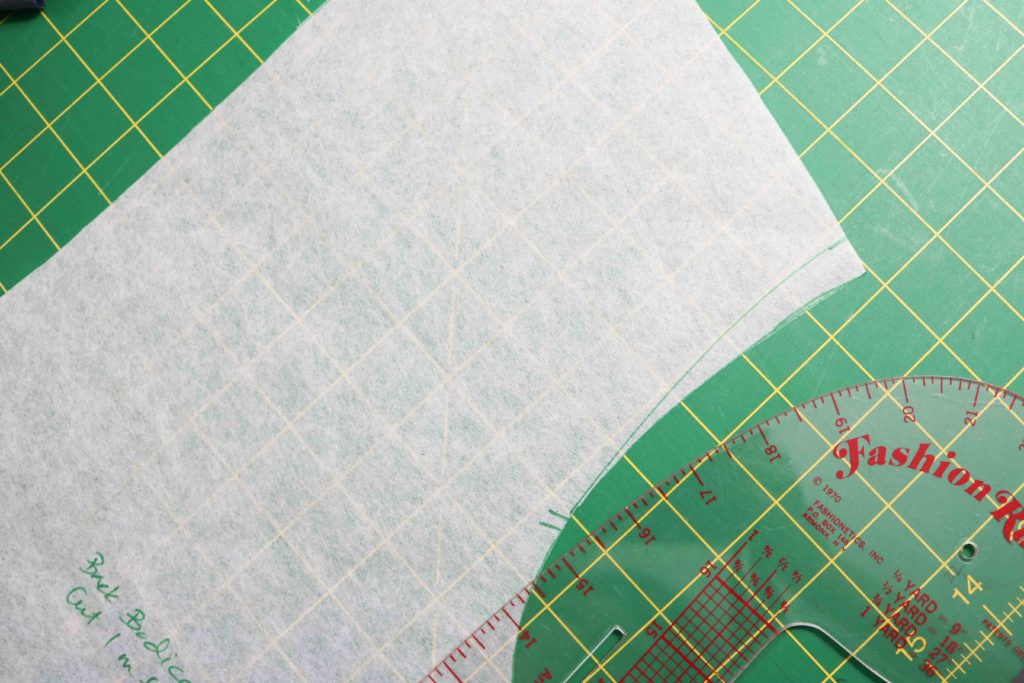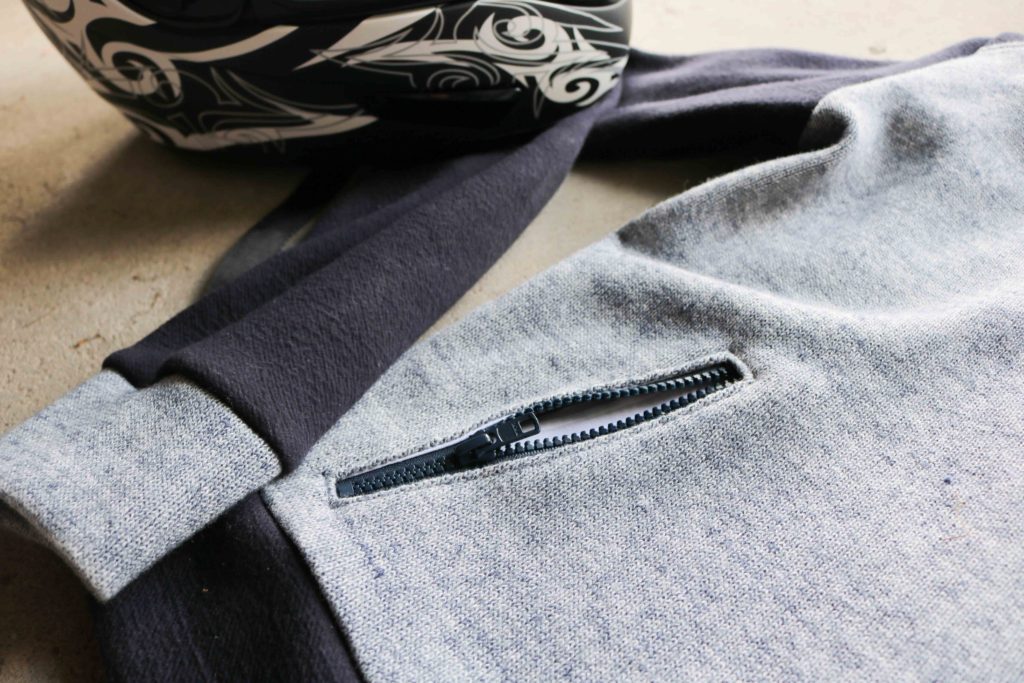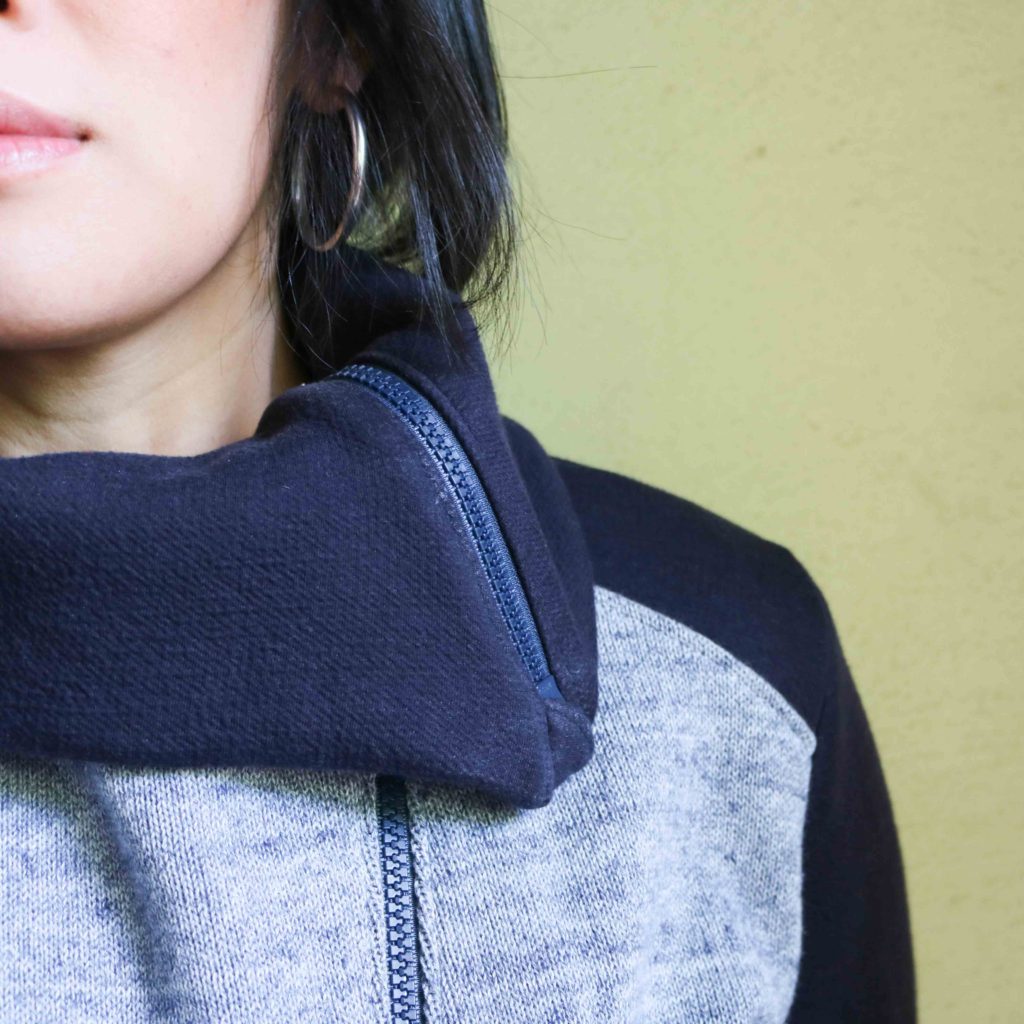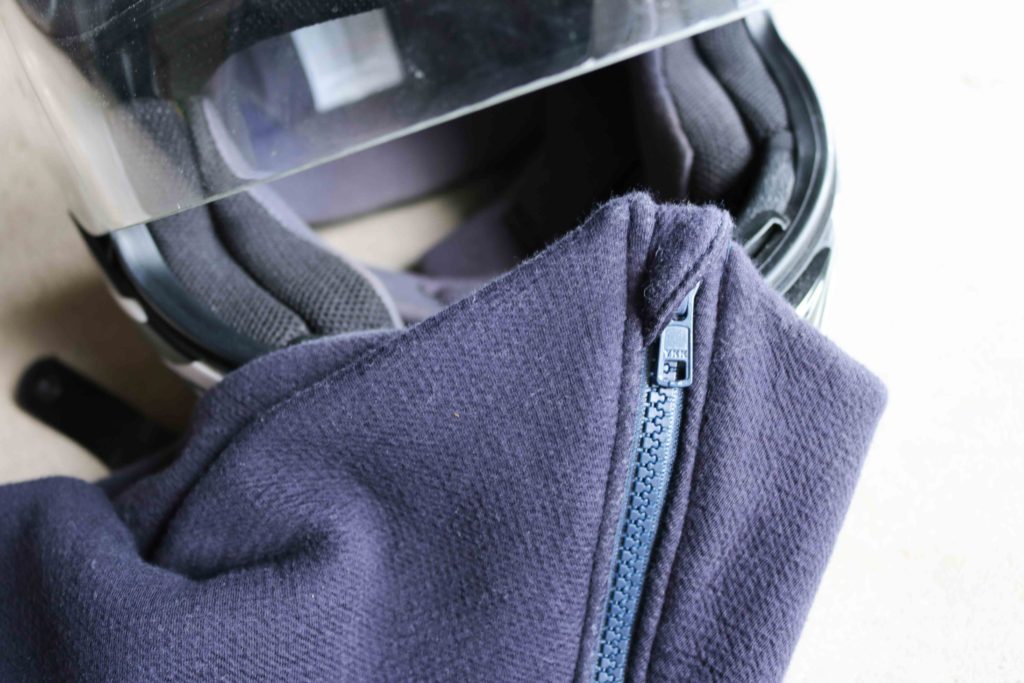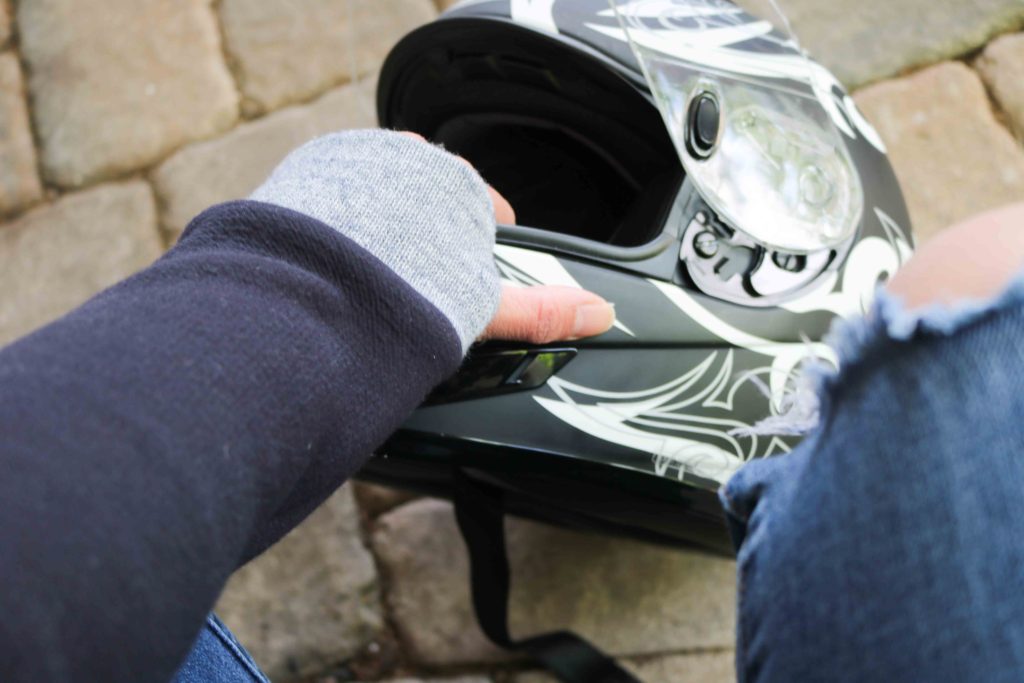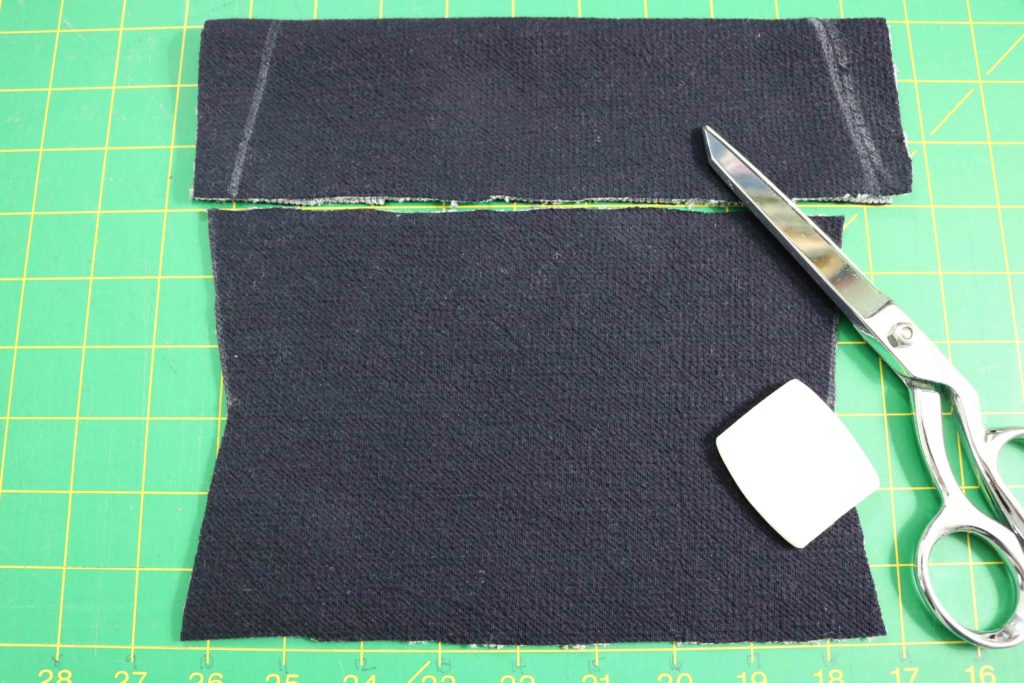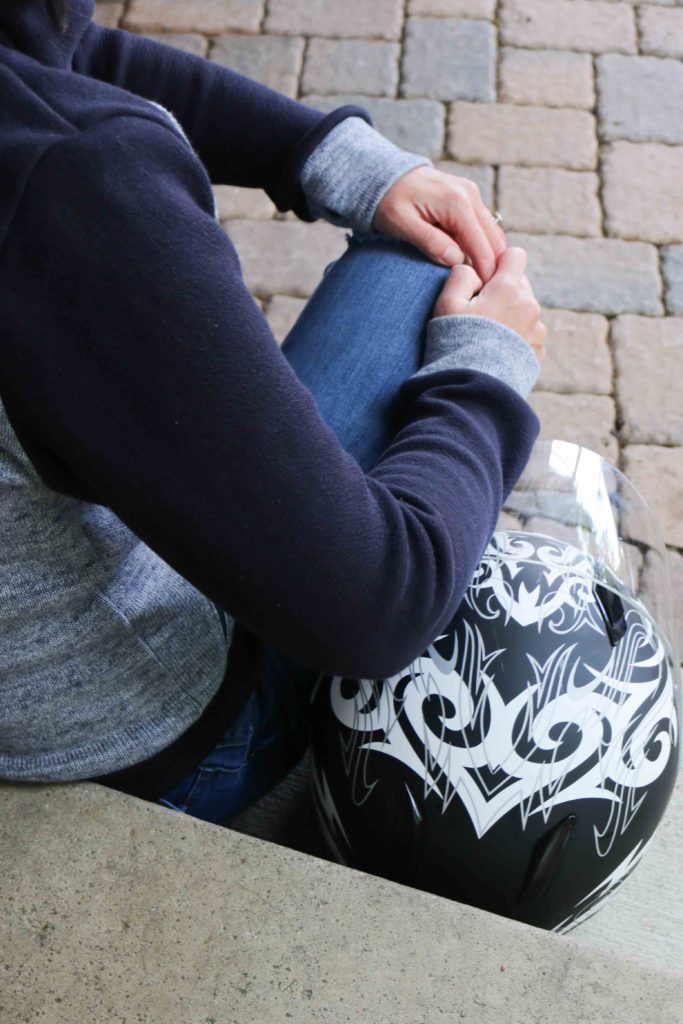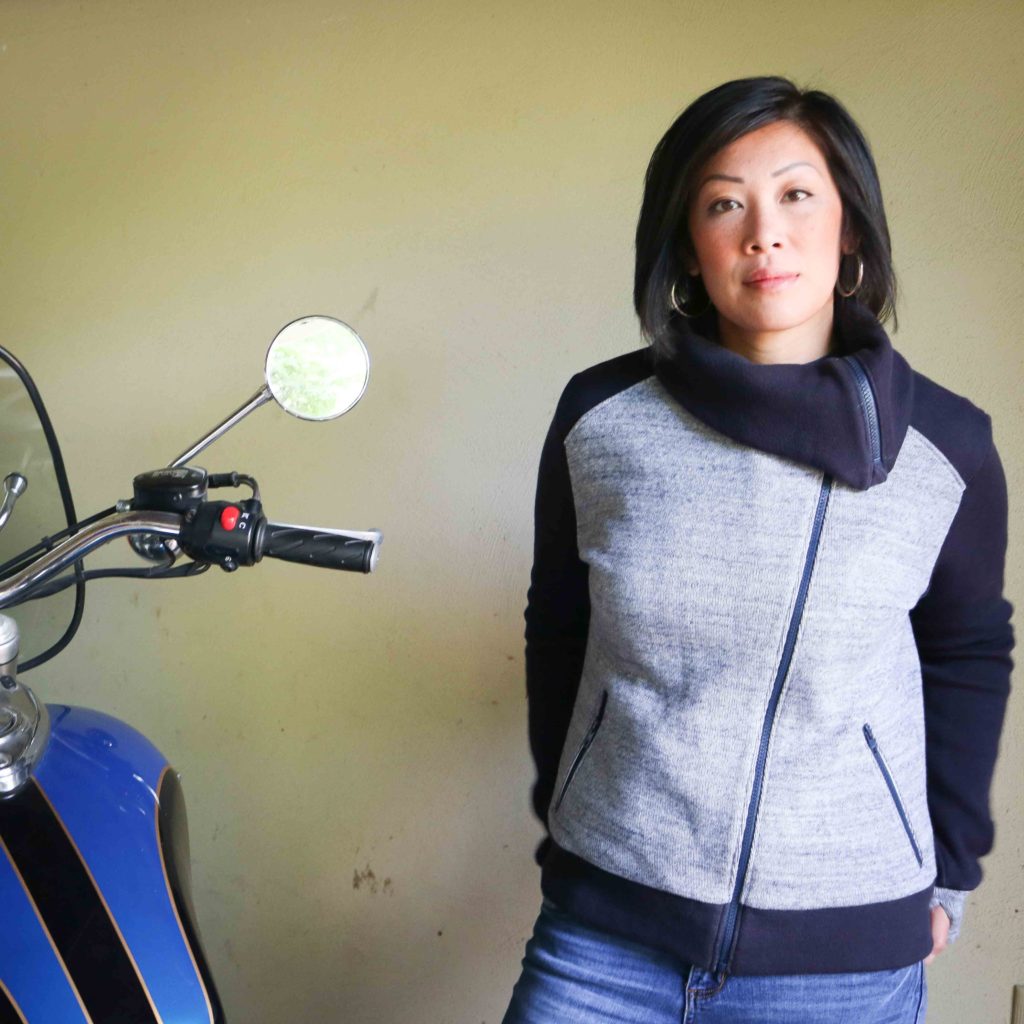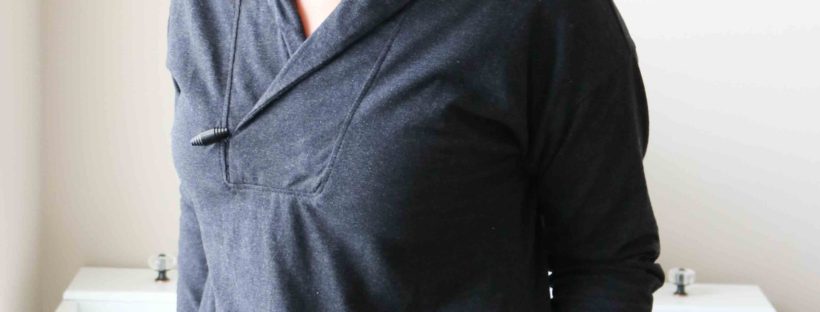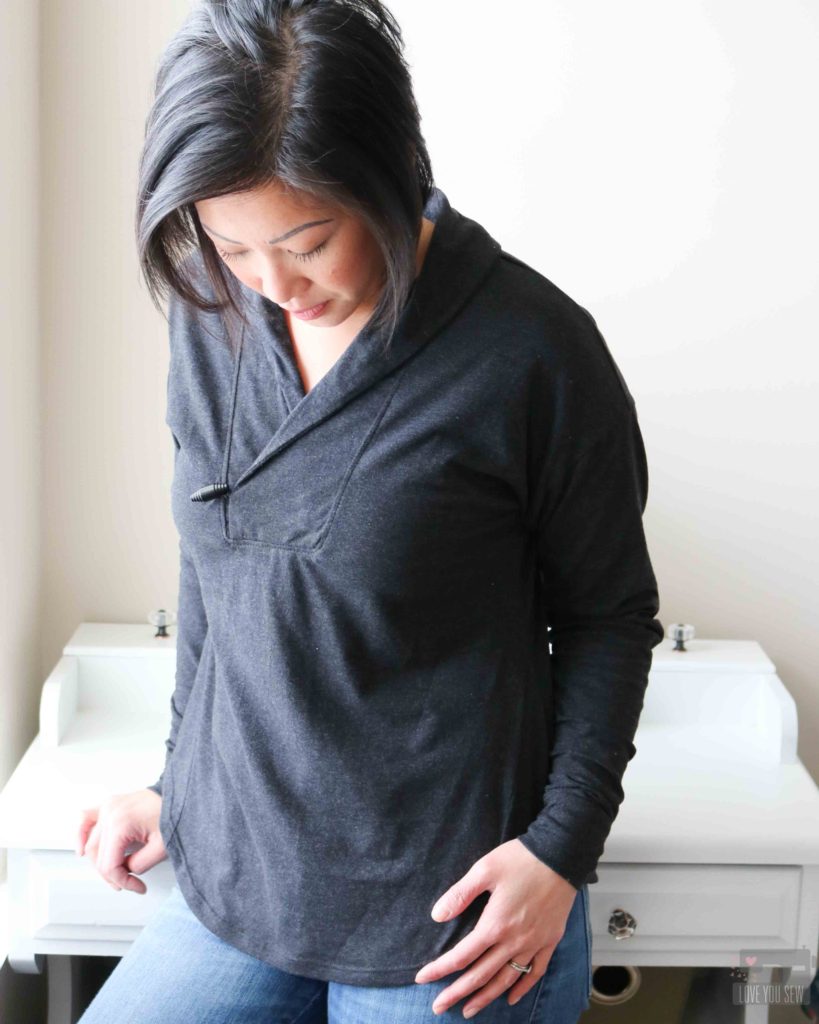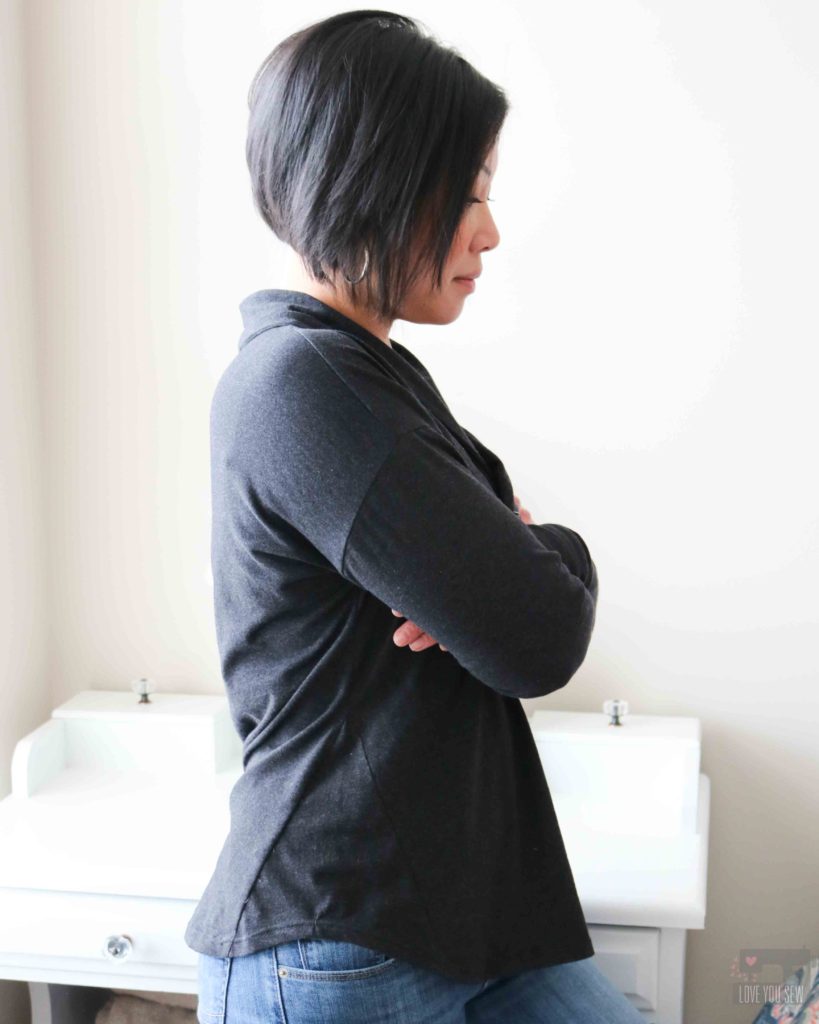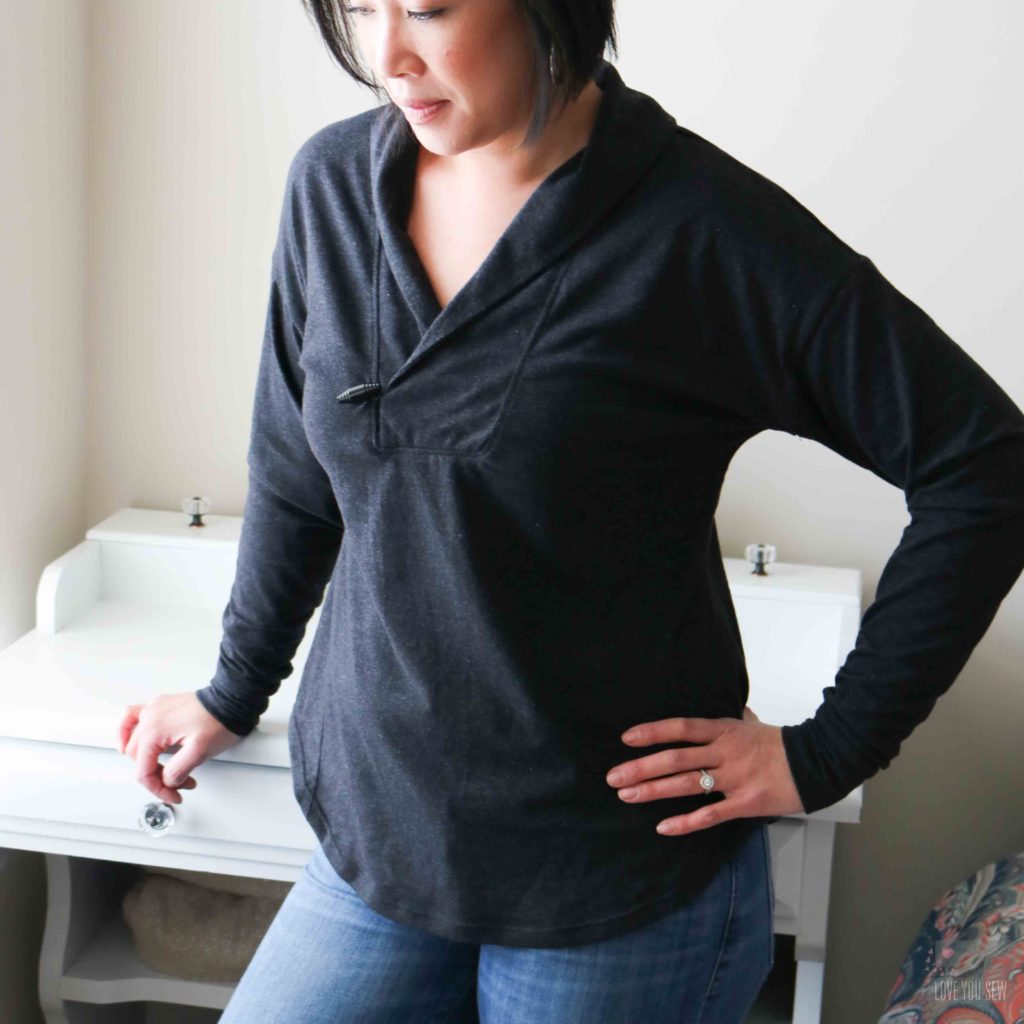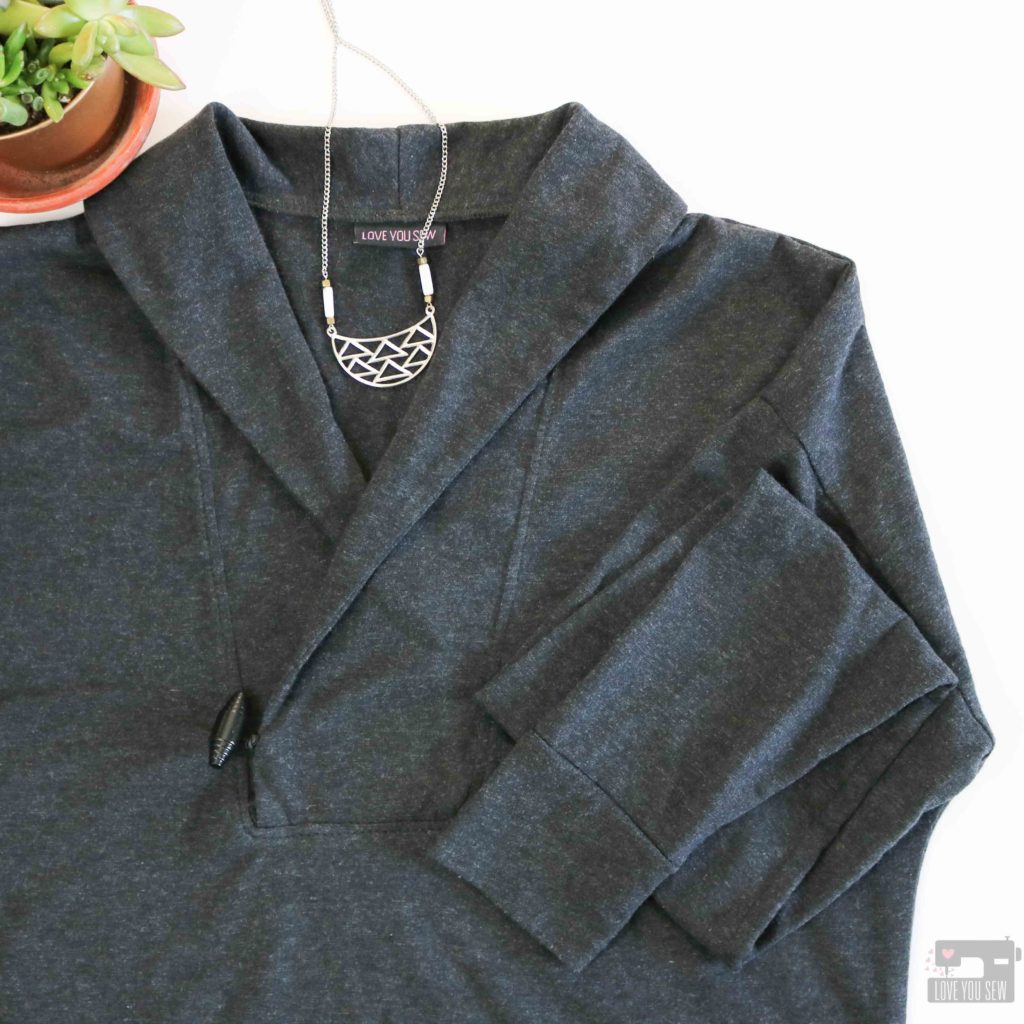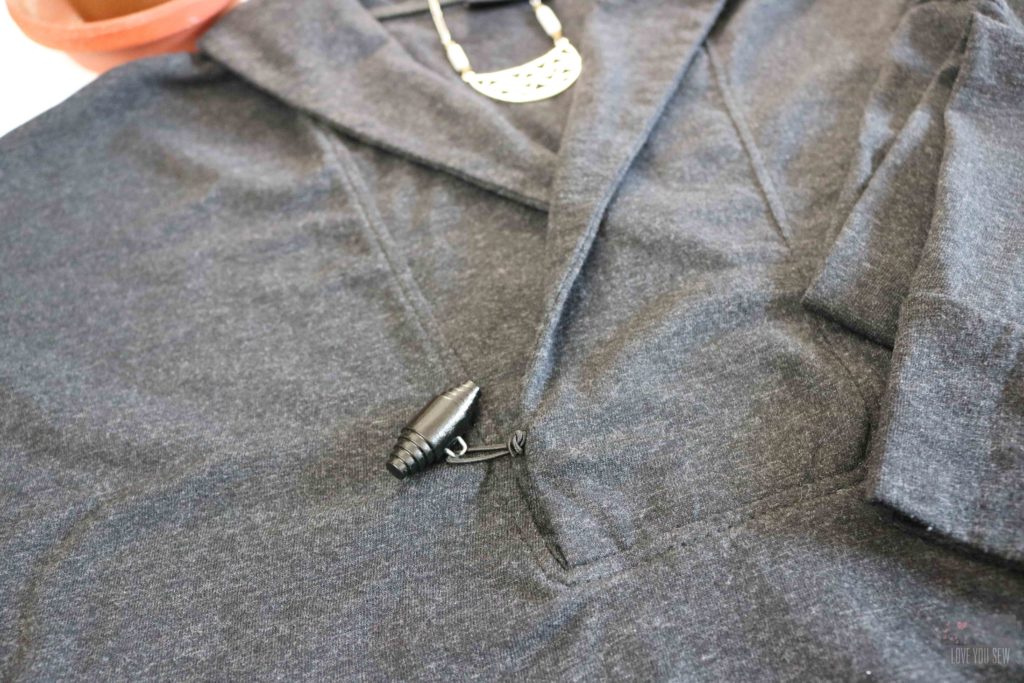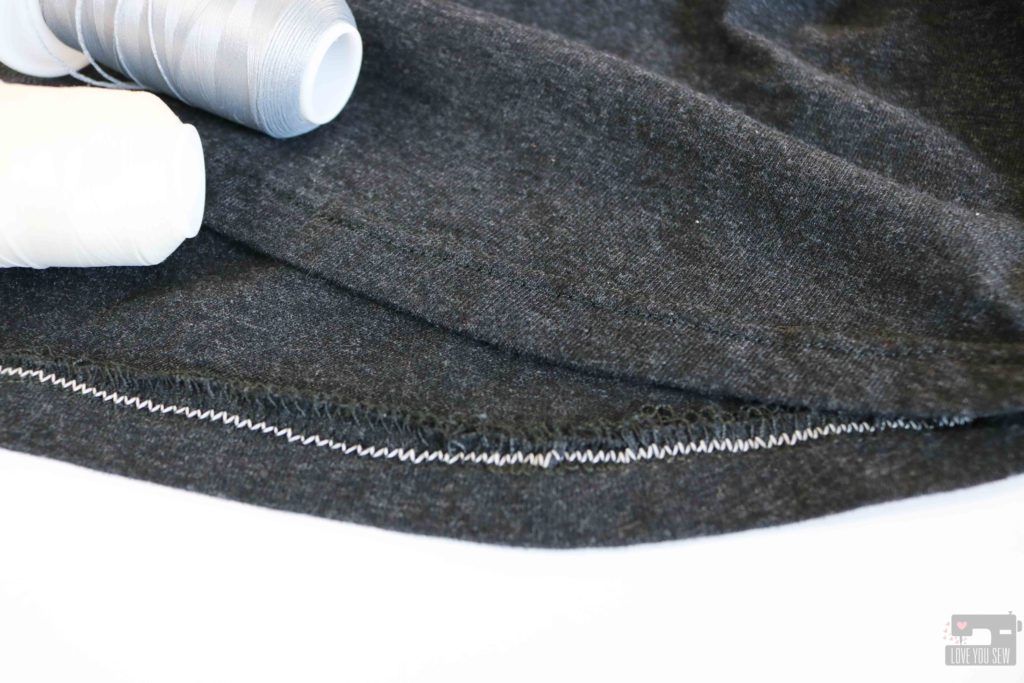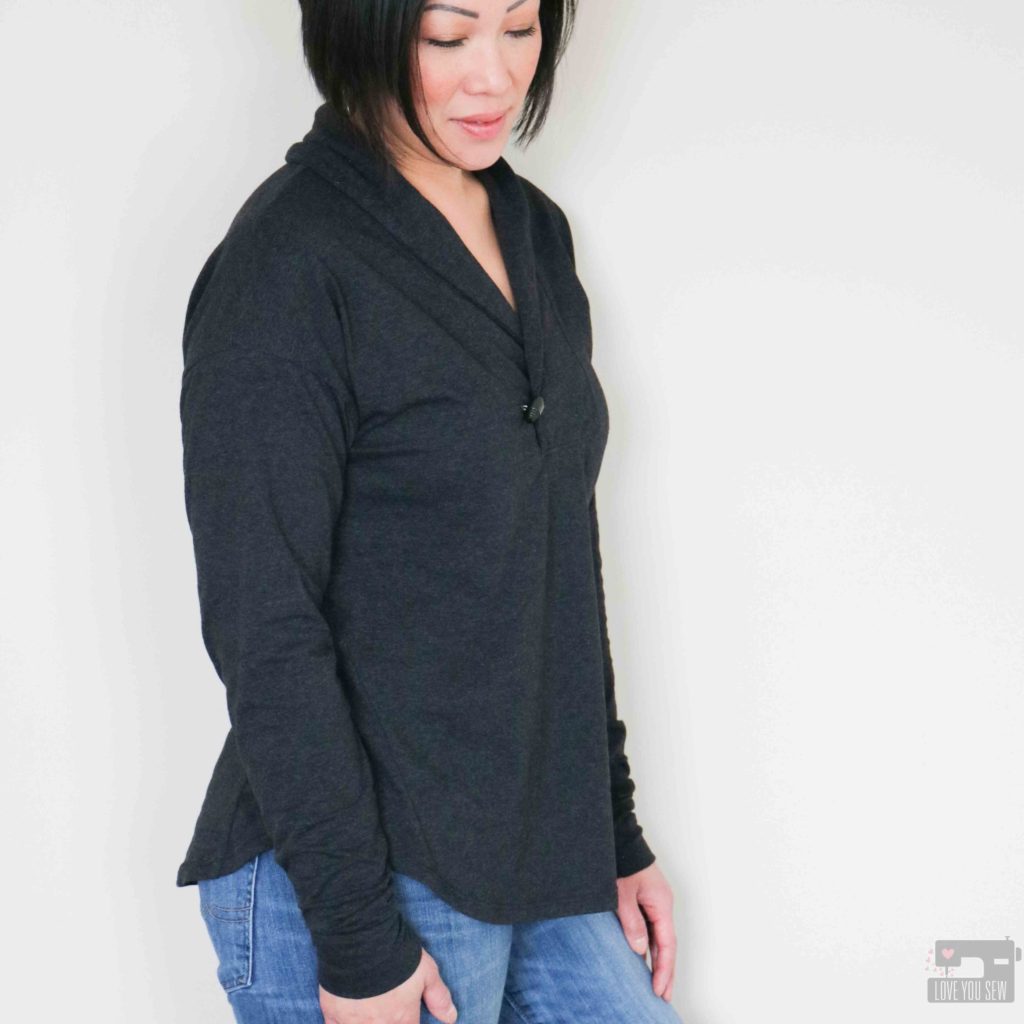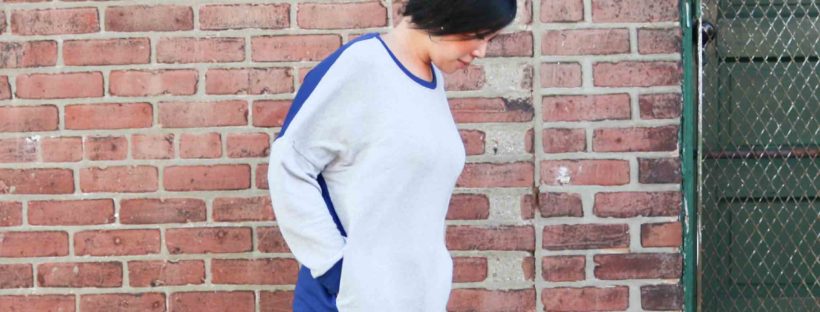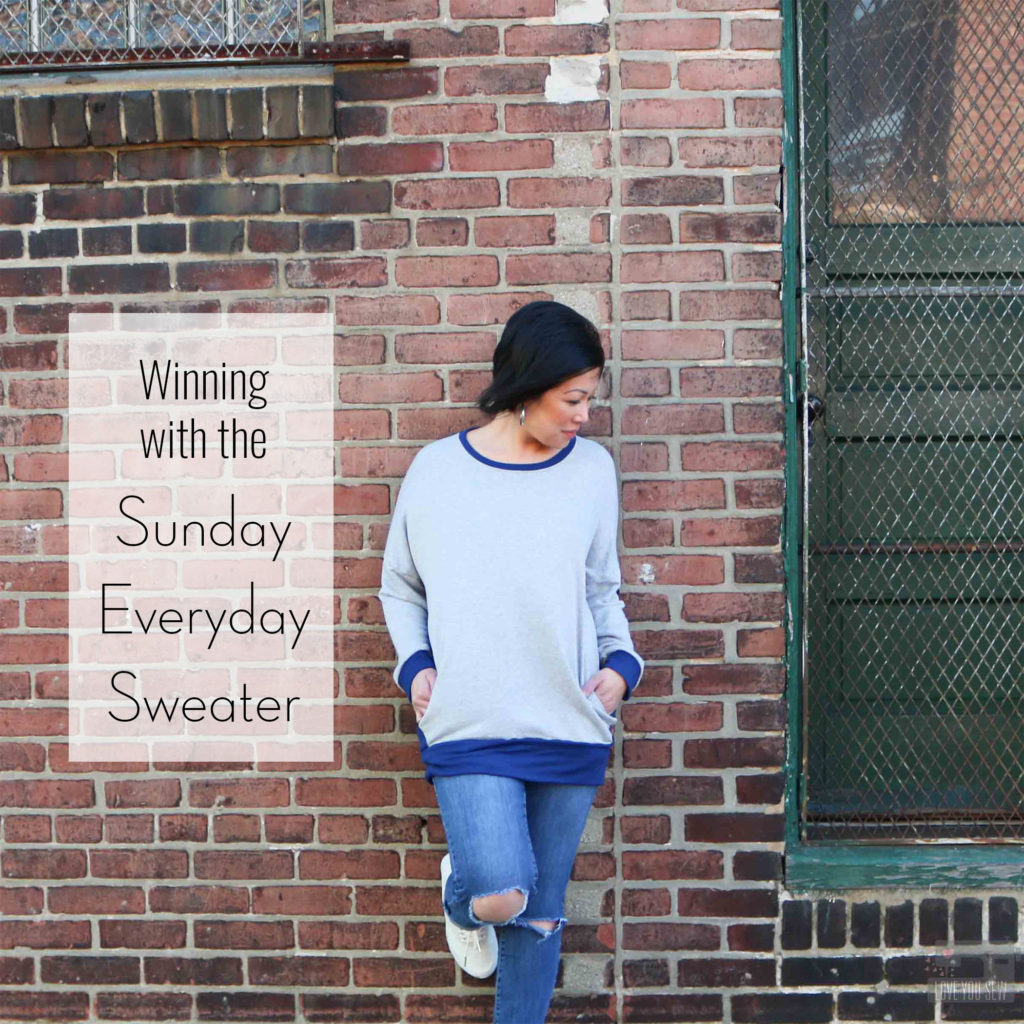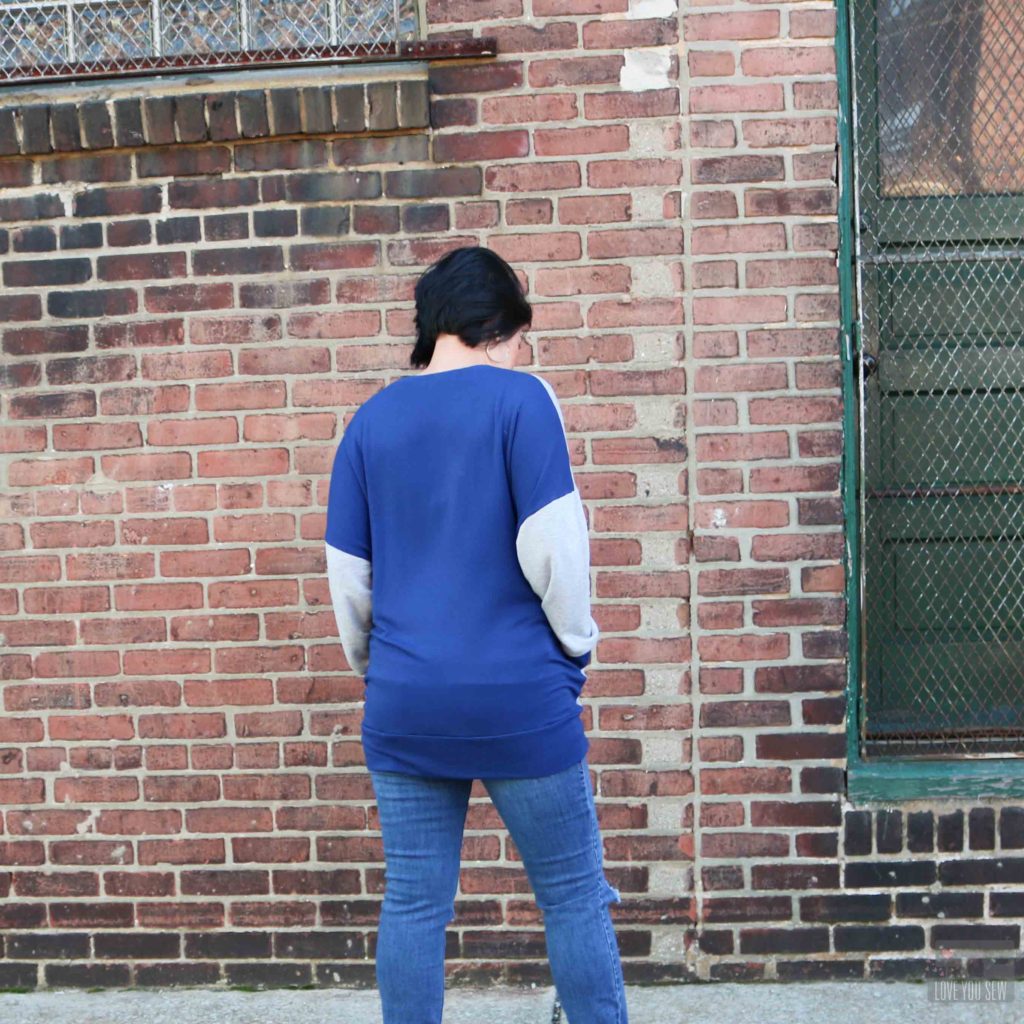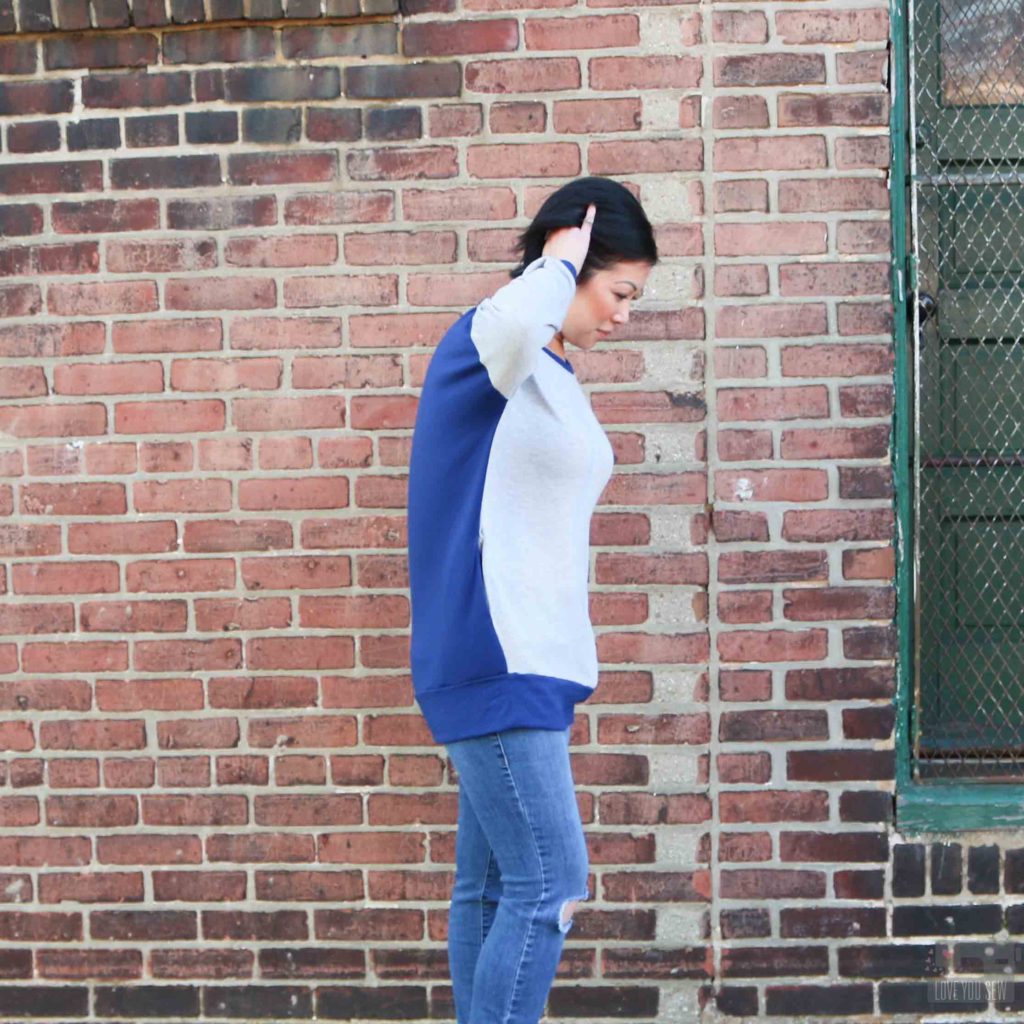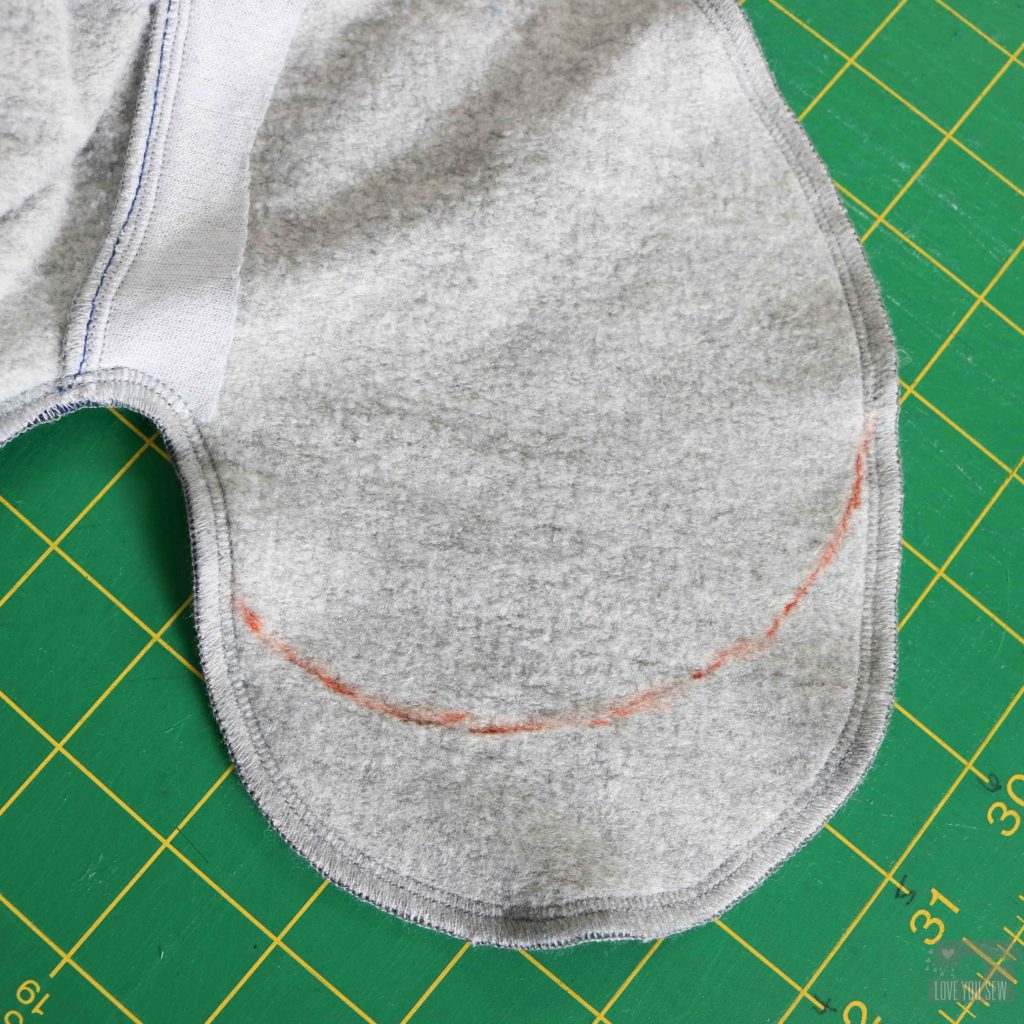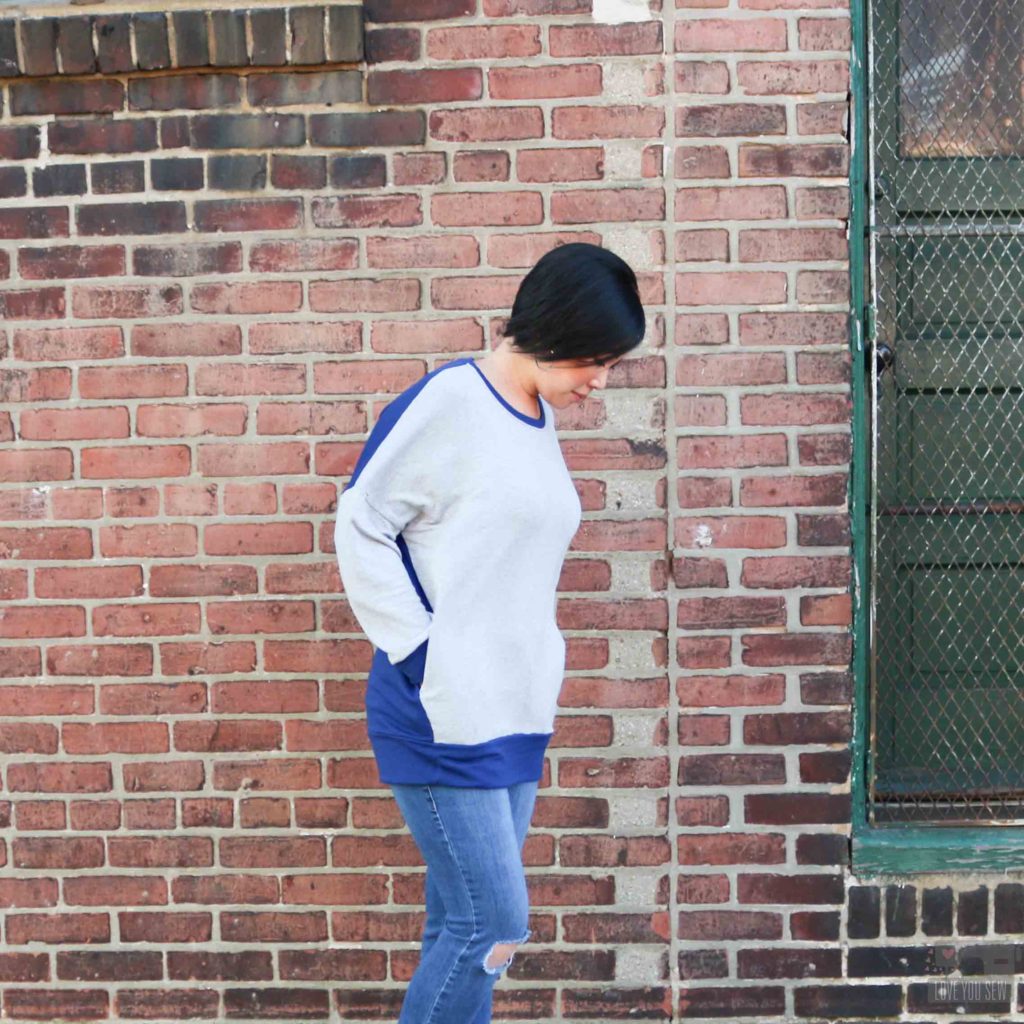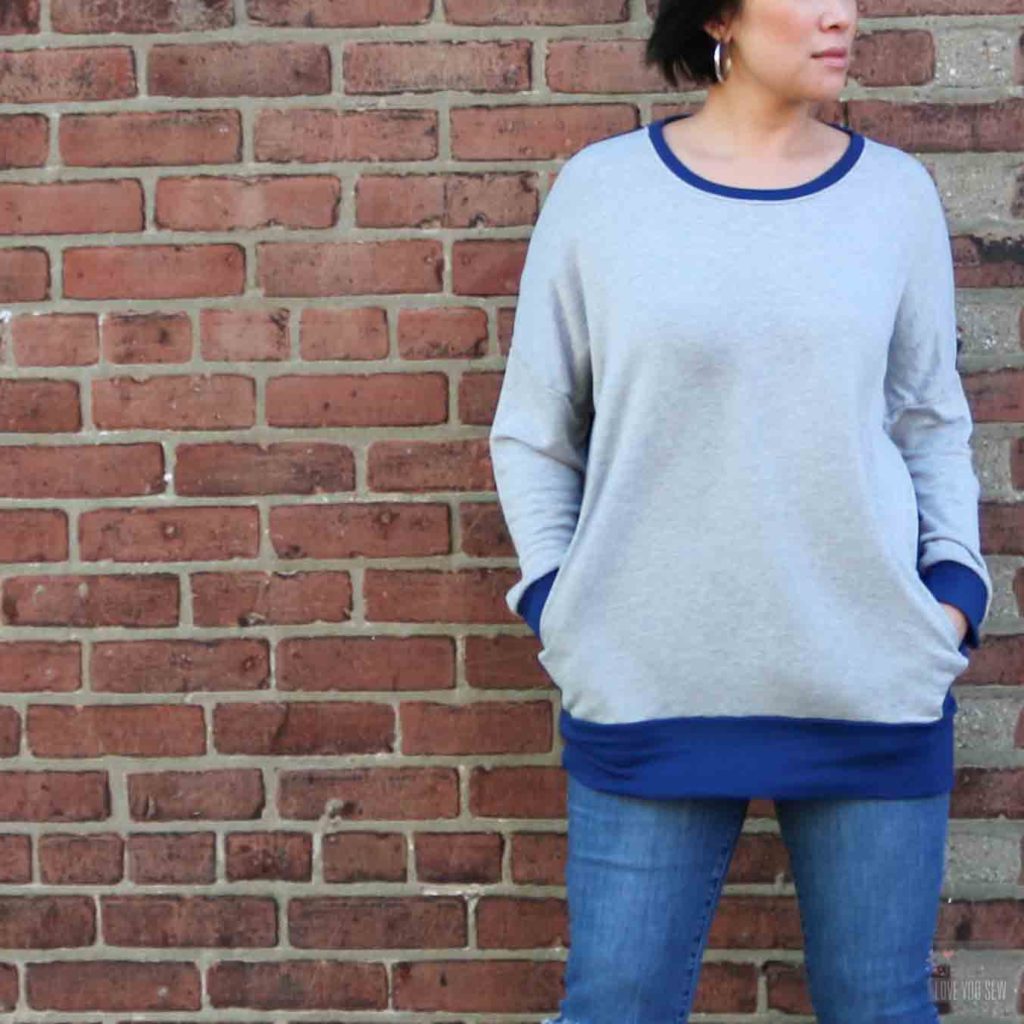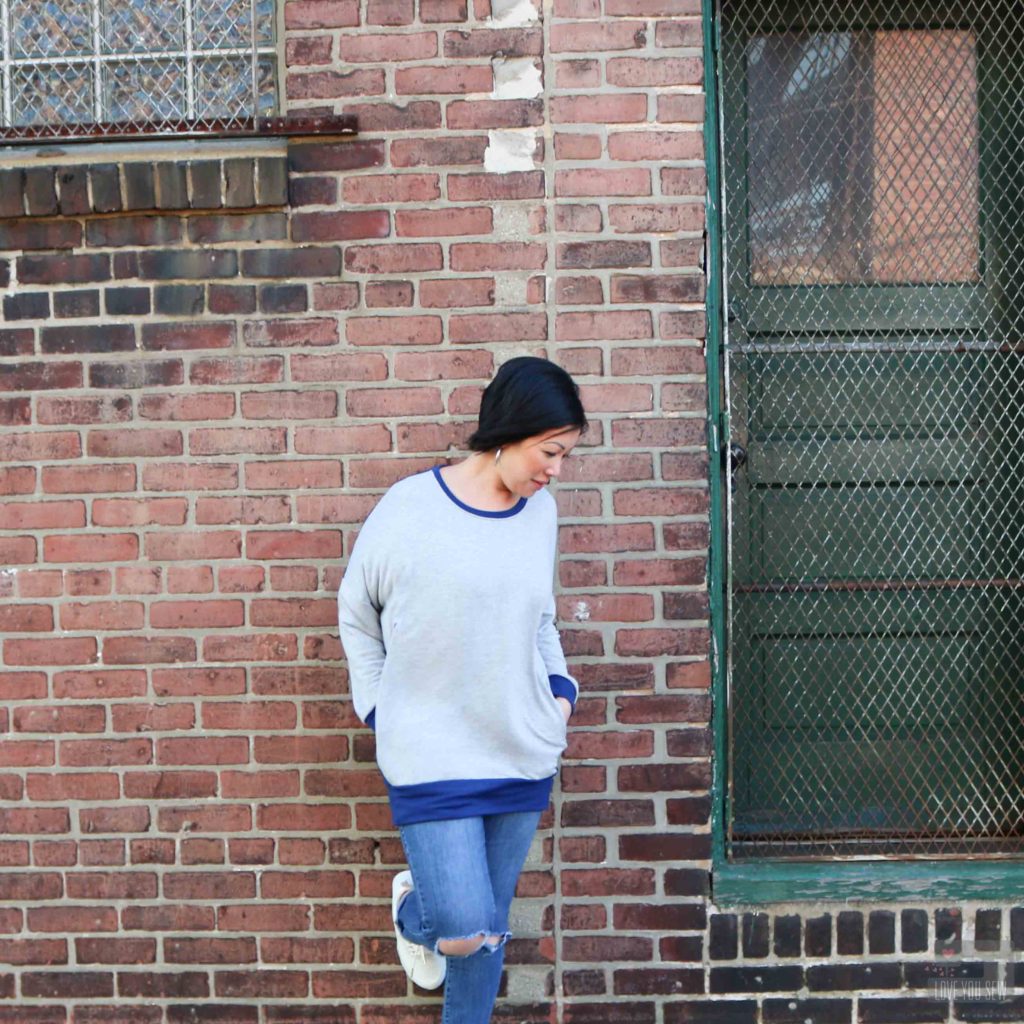When I went to Texas a month ago, I was hoping to make this Tillery Skirt for the hot weather ahead. Unfortunately, I ran out of time and did not make it then. But, I was able to finish this skirt now that central Ohio feels like Texas…at 93*F! I’m so glad I was able to get this made for our first of many heat waves this summer.
Sometimes shorts just don’t cut it. My wardrobe was in need of more casual skirts to get me from swim lessons with the kids to date night with the hubs. So when I saw this digital pattern by Blank Slate Patterns, I knew I had to make it. The Tillery is a great high waisted skirt with a 70’s vibe making my Boho fashion heart flutter. Who doesn’t love the look of the flat felled seams?!?
I recently had the opportunity to visit the Imagine Gnats shop and instantly gravitated to this J.Crew overstock stretch twill in Brick. This rust color is definitely my summer color to go with all the denim <3 It is so rich and complements my coloring. I can always use the extra comfort of Lycra, so the extra give in the twill makes it perfect for a skirt or pants.
As mentioned earlier, these flat felled seams give the skirt so much design character. It maybe a little intimidating sewing eight panels to make the Tillery, but it is all worth it. I never made these kind of seams before, but after watching Melly Sews’ video, the instructions all made sense. TIP: Baste all panels together to check fit. I ended up grading in a size around the waist.
With the seams visible and lots of top-stitching ahead, I used my rolled hem foot to give me an even edge to sew along. Many machine have an edge or top-stitching foot. My Juki only came with a few feet and this foot works great to get even spacing.
Look at those beautiful skirt guts! Or maybe lack thereof… The flat felled seams gives the skirt such a clean inside, so it’s soft and smooth all around. I used some Wanderer fabric by April Rhodes left in my stash for this extra pop around the waistband. The little hints of black and mint really bring out the brick color of the fabric.
As you can imagine, the hem of the skirt can get pretty thick when doubled over against these flat-felled seams. My regular foot didn’t even want to go over all of this bulk, so that’s when I broke out my hammer to help flatten them out for stitching. TIP: Make sure to test your fabric and hammer to the inside of the hem so you don’t create any “shine” on the front of your skirt.
Another beautiful feature of the Tillery are the use of metal snaps. There are instructions within the pattern with a link to video to help you, if needed. Fortunately, I already had the snaps and the correct dies for my hardware setter (as the bag-maker you know I am.) I was able to add these snaps quickly making the skirt look so professional.
The next time I make this skirt, I think I will grade back in from the hip down. The waist and hip fit perfectly, but with the A-line cut of this pattern, I feel like I have a little bit too much flare going outwards. It’s hard to tell in this photo, but the skirt A-lines at every angle (not just the front and back) thanks to some extra booty…
I ended up skipping the belt loops and even contemplated the pockets. But the pockets really make the skirt and break up the high-waisted silhouette…AKA looking like old school mom/dad jeans! Who was I really kidding? Always add pockets.
I’m in love with this skirt and love how it all came together. The solid fabric really brings out the seams and this brick color is a definite wardrobe staple. My Tillery will be on repeat all summer long with it’s casual style and it will go with tanks and tees. This piece will definitely be worn into the fall!
Project Details:
- Pattern: Tillery Skirt by Blank Slate Patterns
- Sizing: 6 in the waist graded out to an 8 in the hip
- Length: Mini
- Fabric: J.Crew Overstock stretch Twill from Imagine Gnats
- Machine: Juki TL-2010Q
- Hardware: Gold Star Tool Hardware Setter with in-house snaps. Unfortunately, I cannot recommend their snaps. They bend a little when opening, but not enough to make me remove them all. Going forward, I’ll only use Tandy Leather Snaps.)
Happy Sewing Friends!
Cristy
This post does include afflilate links for which I would be compensated only if you make a purchase. All of it goes to keeping this blog as ad-free as possible!
